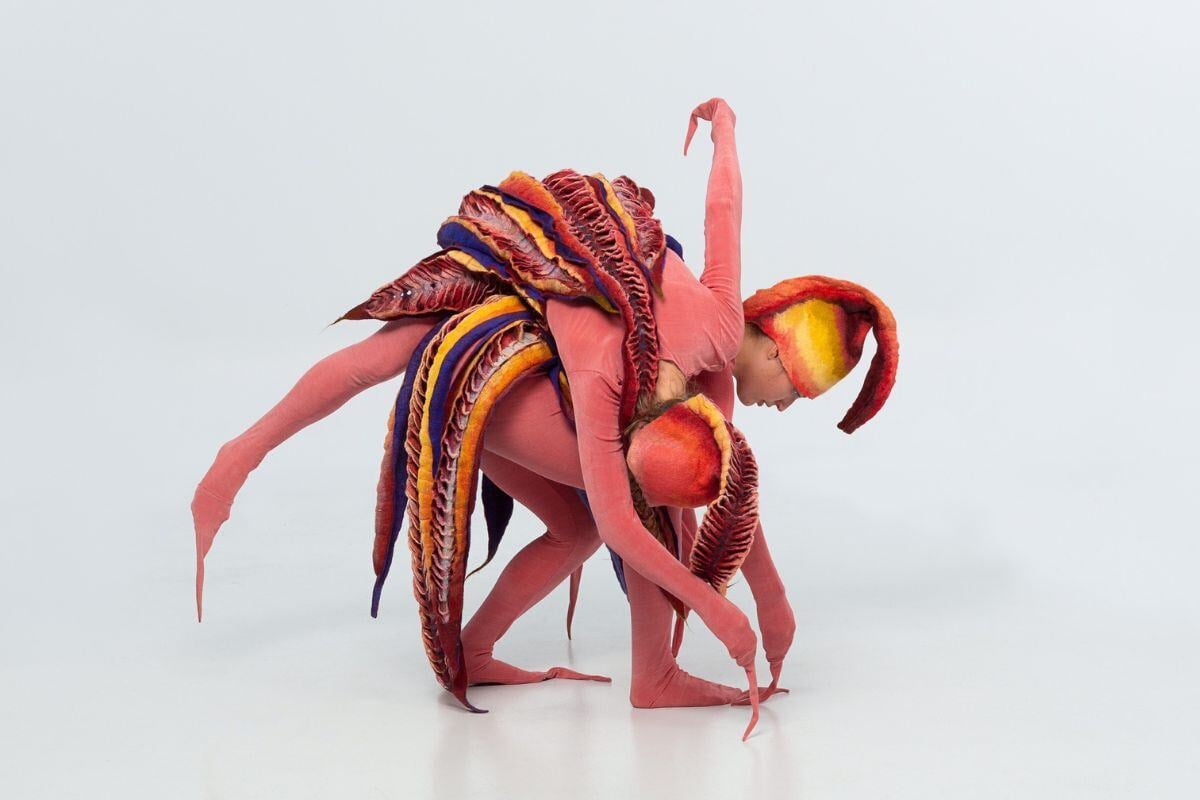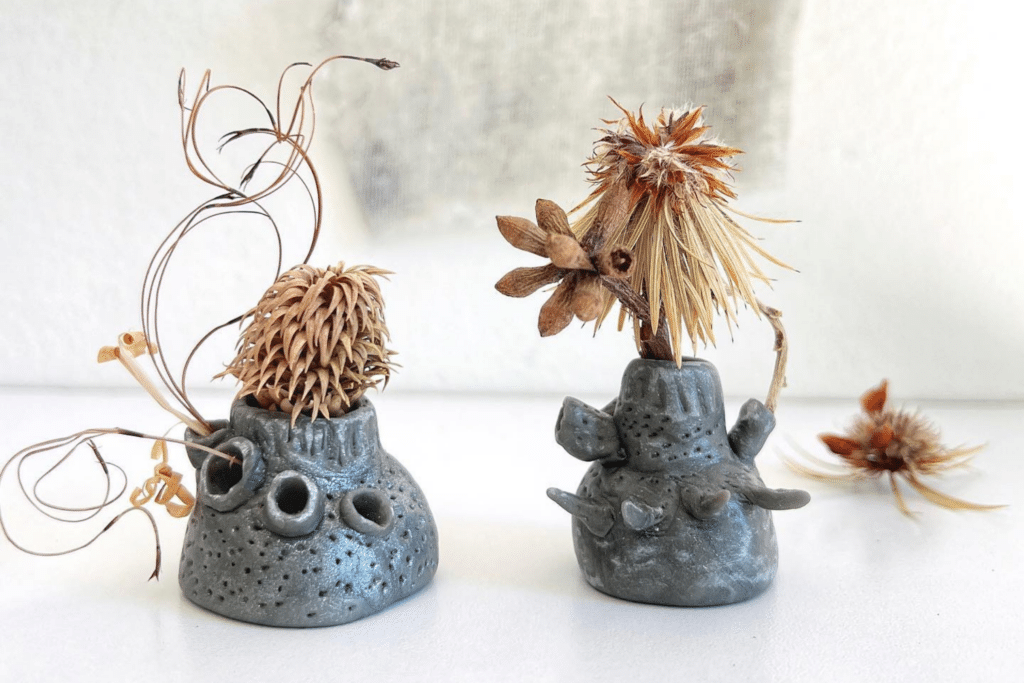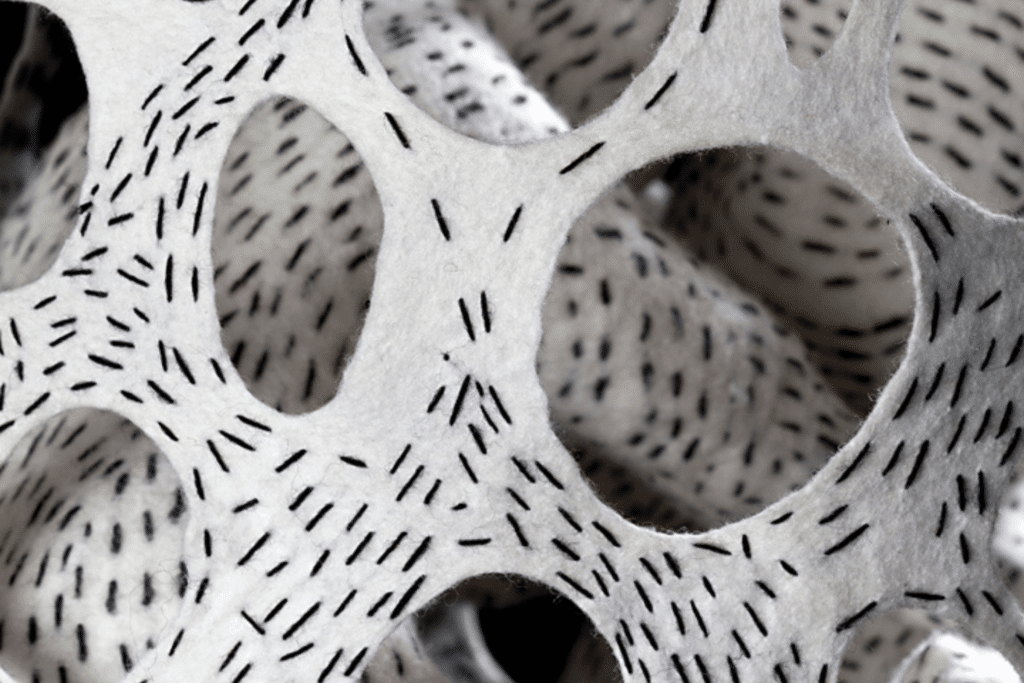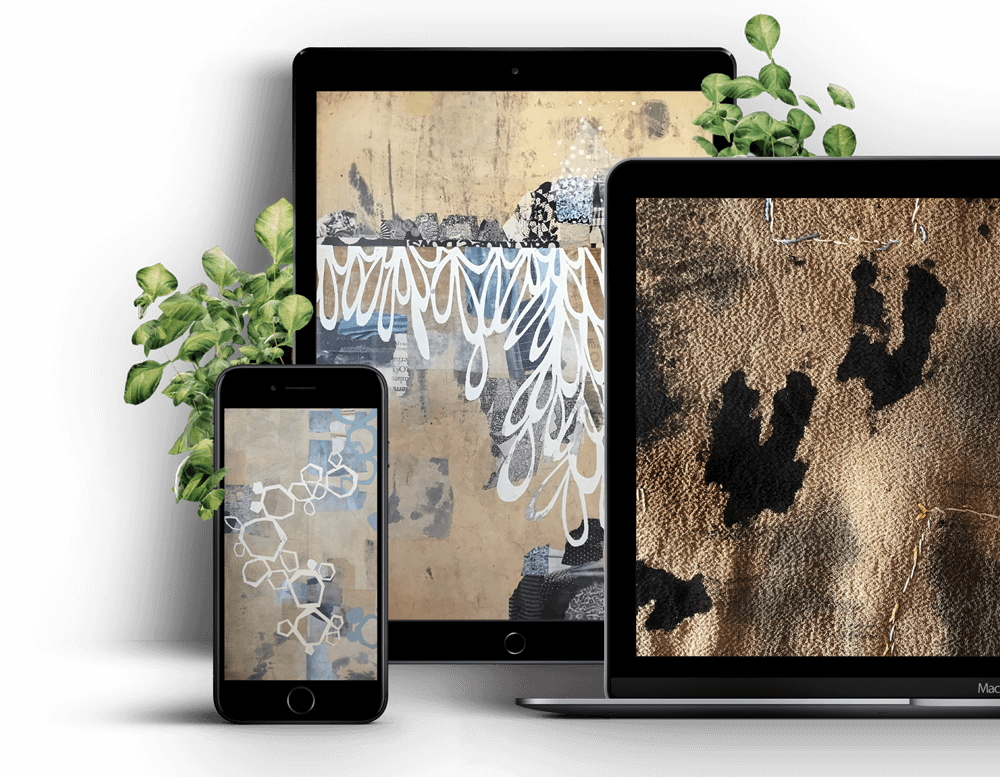Helle Jorgensen
From medical science to multidisciplinary art. Fibre Arts Take Two spoke with Helle Jorgensen about her varied career.
Helle’s Friday Feature Artist Interview can be found at the bottom of this page.
Inspired by the extraordinary beauty of the natural world, Helle Jorgensen’s artwork is delightful and varied, from intricate assemblages of tiny crocheted forms referencing marine life to humorous sculptures that amuse and delight.
With a background in biology, medical research and horticulture, Helle’s working materials consist of discarded, recycled or sustainably harvested materials, a conscious choice, offering both limitations and freedom.
She creates work with repurposed plastic bags, handmade twine and seemingly useless objects that she has been collecting for decades. Helle works from her studio on her beautiful property in the Tweed Valley of New South Wales, surrounded by nature, where she can get lost in materials.
Fibre Arts Take Two spent time chatting with Helle about her unique journey.
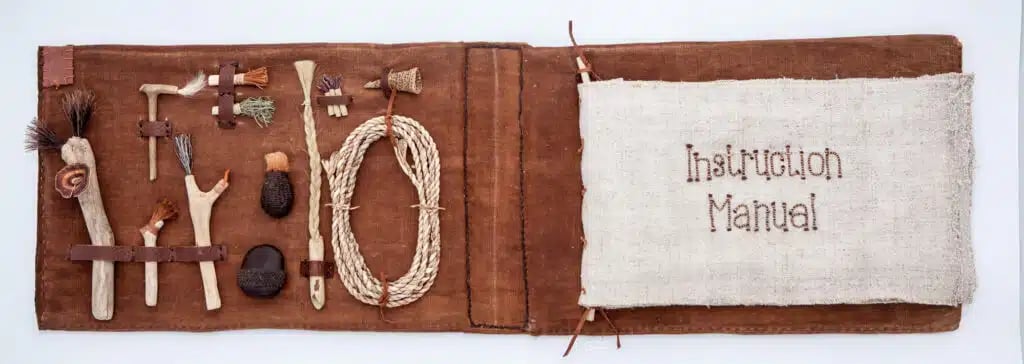
From science to art
Helle moved from an early science career to the arts. “I came to Australia from Denmark when I was 13 years old. I ended up studying biology at university, and then I did a lot of scientific and medical research, but I wasn’t terribly happy doing it. I ended up studying Fine Arts part-time and horticulture as well because I like to get dirty and have my fingers in the soil. So it’s been a very long evolution of self-discovery, I suppose, working out who I am and what I enjoy doing, and it turns out that it’s making things with my hands and being creative.”
On being multidisciplinary
Once she moved to art, Helle found that being a multidisciplinary artist came naturally. “I have a very strong curiosity for all sorts of things. And also I get very easily bored! I might start in one medium and quite quickly move on to something else. I often have a lot of projects going simultaneously in all sorts of different media.”
Being multidisciplinary also has its advantages, “I find that each medium and what I learned from that medium feeds into working with other media. It all comes together, with bits of information from working with certain things feeding into each other, and I learn so much more that way.”
More conceptually, Helle doesn’t believe in being pigeonholed. “I really don’t like categories. I’m always trying to elbow my way out of being categorised in any way because I find it very restricting. If you are categorised as a fibre artist or a sculptor or whatever, people have certain preconceived ideas about those terms, and I don’t think that’s such a good idea.”
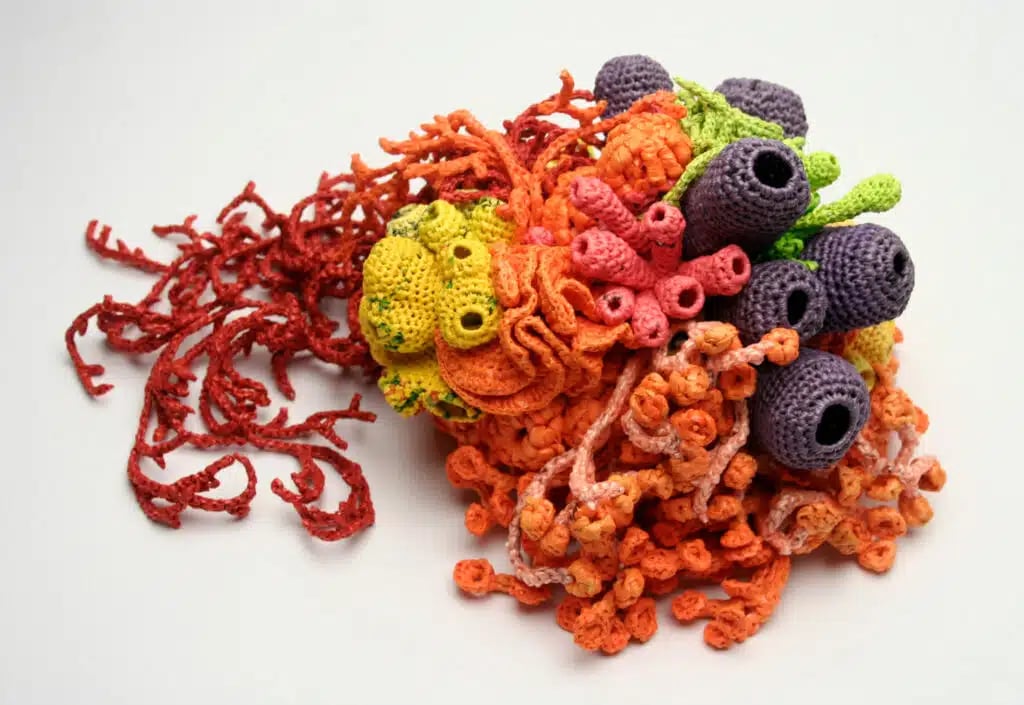
Process as purpose
For Helle, the creative process is as important as the results. “The creative process has been very helpful for me. I’ve used it as a way of self-discovery. As you age, you get to understand who you are. And so the creative process has really been very helpful for me to be able to work out who I am and I find it to be a really good place to resolve things that I don’t understand, from my environment and my relationships to events in the world. I enter into an internal dialogue through that creative process, and because I’m doing a lot of repetitive work, I find that it’s a really nice space where I can sort of think about things clearly. I’m very interested in that connection between working with your hands and the mental processes that go on in your mind.”
Helle believes that creativity can help everyone, not only artists. “We all need to know who we are. I think it’s very useful.”
As an artist, Helle’s approach to her work tends to be organic. “I investigate materials and techniques. I tend to really work with the material, whether it is cardboard or plastic bags, for quite an extended period of time, and I use very laborious techniques like stitching, crochet, etc.”
“I work away quite intuitively, without knowing what sort of outcome I’m going to get. I really don’t know what I’m going to make. So I end up doing all these little experiments. But I find that, during that process, and having all these pieces, all of a sudden, I start to see patterns emerge about the materials and about what I’m thinking. And all of a sudden, after spending endless hours working on something, it comes together, and I realise what it is that I’m doing.”
Artist and person
Helle brings the same relaxed attitude to her studio time. “You’ll find me in the studio in my nightie till about lunchtime. It is really just part of me and my life, and it’s what I do every day. I don’t feel I need to be in the studio for many hours a day. Because even if I’m not, I’m still thinking through projects, research, and things I’m working on. I could be on my mower or fixing the fence or something and still be working on some art piece or exhibition ideas. It’s definitely not a discipline; it’s just life for me. And it happens every day, all the time. Being an artist and being a person they’re the same thing. They’re not really separate.”
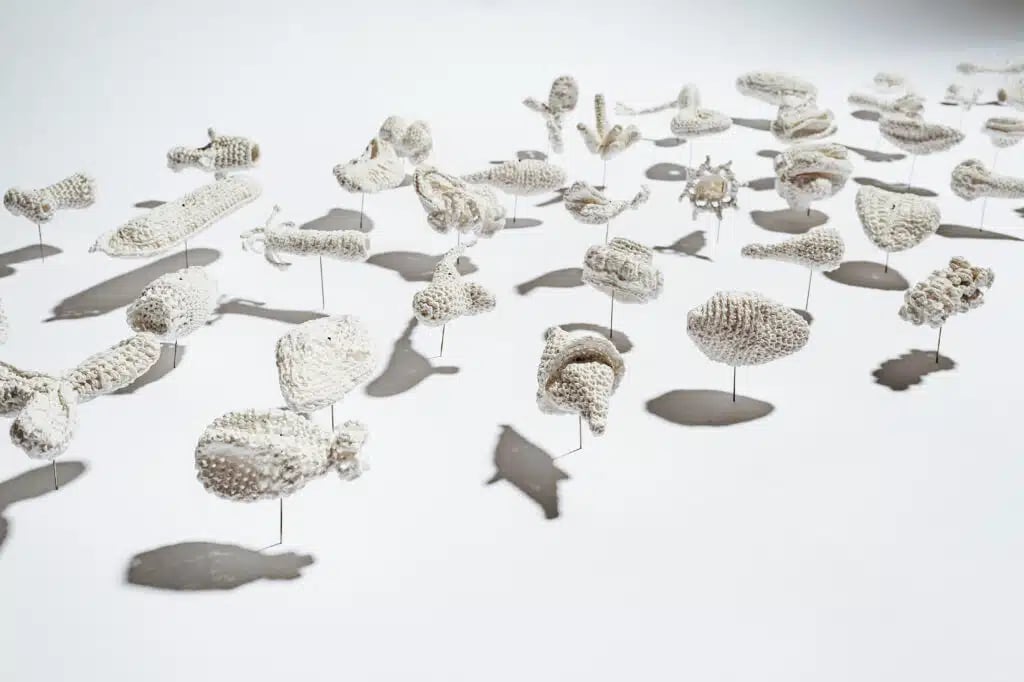
About the artist
Helle Jorgensen is an artist and educator who encourages curiosity and experimentation. She has had many solo shows nationally and group shows internationally, including in New York, Los Angeles, Washington and London. Her work has been published in many books and international journals.
Notifications
Join Our Newsletter
OUR YOUTUBE CHANNEL
View our interviews and more on our Youtube channel!
OUR FACEBOOK GROUP
Join our Community and stay updated with our upcoming announcements!
